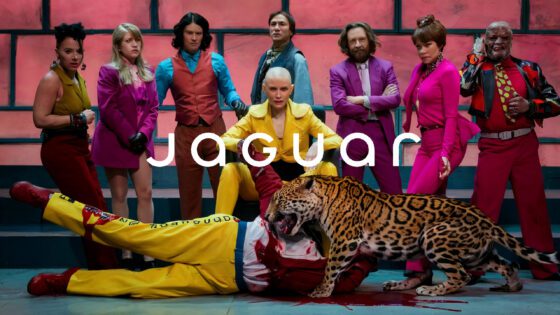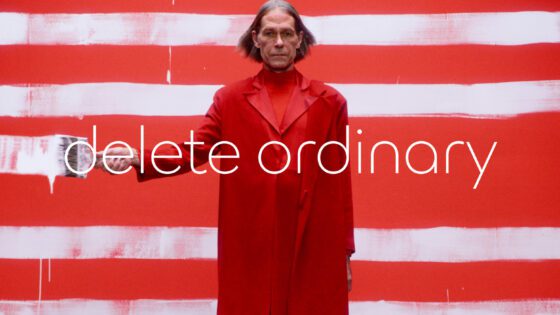Presenting creative work is a collaborative team effort. Presenting from the “We” approach not only ensures that clients understand the breadth and depth of contributions from the entire team, but also fosters an environment where all members of the team share responsibility, be it for success or failure.
Over the years, running agencies and leading creative teams has taught me many invaluable lessons. One of the most important lesson involves presenting creative work as a collective effort—always as a “We,” never as an “I.” This is not just a matter of semantics; it’s a principle that has shaped my approach to leadership, collaboration, and client relationships. Through decades of managing teams and interacting with clients, I’ve come to believe that this philosophy is important for both fostering internal cohesion and building long-term success.
Furthermore, by emphasizing collective effort, agencies protect themselves from concentrating praise or blame on a single individual, which can skew perceptions, damage morale, and distort the reality of the creative process.
The Importance of Team Dynamics in Creative Work
Marketing and advertising are inherently collaborative disciplines. The process of bringing a campaign to life involves multiple layers of strategy, creativity, production, and execution. Rarely, if ever, does a successful campaign emerge from the mind of one individual. Instead, it is shaped and refined by contributions from strategists, designers, copywriters, media planners, and project managers, among others.
Rosser Reeves, one of the great advertising minds of the 20th century, acknowledged the team aspect in his work, stating that “I alone did not write this book. It was written by a body of dedicated men and women”. This sentiment holds true across the creative industries: individual brilliance may spark an idea, but it is the collective effort that refines it into something great.
Accountability and Shared Responsibility
When creative work is presented from a “We” perspective, it helps distribute both the credit for success and the responsibility for failure across the entire team. This is not just about protecting individuals from blame; it ensures a more realistic appraisal of the complex processes that lead to an outcome. As Reeves argues in Reality in Advertising, “Advertising is only one of many factors that can cause sales to rise or fall”. Similarly, the success or failure of a marketing campaign can be attributed to a multitude of interconnected factors. By framing it as a team effort, the focus shifts to improving overall processes rather than assigning individual blame.
Neil McElroy, a pioneer in brand management, emphasized the importance of team dynamics in his famous 1931 memo: he called for the creation of brand management teams, acknowledging that the success of a brand depended on the contributions of various individuals working toward a common goal. This call for teamwork extends to how creative work should be presented to clients.
Lesson 1: Creativity Is a Team Sport
Early in my career, I learned that no piece of creative work is truly the product of a single person. Sure, someone might have the initial spark of an idea, but it’s the collaboration of many minds that transforms that spark into something meaningful and impactful. Whether it’s a strategist’s insight, a designer’s flair, or a project manager’s organization, every piece of the puzzle is essential. Presenting creative work from a “We” perspective underscores this reality.
I’ve seen too many situations where someone—whether it’s a creative director or a junior team member—was either unfairly praised or blamed for an entire project. It didn’t take long for me to realize that this not only distorts the truth but also erodes team morale. Over time, I adopted the mindset that I wasn’t just leading a collection of individuals; I was guiding a creative ecosystem where each part plays a vital role. If the project succeeds, it’s because we succeeded together; if it fails, we all share responsibility and learn from it.
Lesson 2: Shared Responsibility Prevents Burnout and Egos
One of the more subtle benefits of the “We” approach is that it helps keep egos in check while preventing burnout. In the early days of running an agency, I sometimes saw individuals take on too much, trying to be the star or feel the weight of the entire project on their shoulders. This is an unsustainable model. When someone shoulders all the credit or blame, it sets them—and the team—up for failure in the long run. It took a few of these experiences for me to realize that shared responsibility fosters a healthier work environment.
Neil McElroy, in his famous memo on brand management, advocated for creating teams that could take ownership of a project without placing the burden on any one person. I found this advice invaluable as I built teams over the years. By emphasizing that we succeed or fail as a unit, I helped create a culture where people supported each other, knowing that their contributions were valued and recognized.
Lesson 3: Clients Trust Teams, Not Solo Acts
From a client’s perspective, understanding that an entire team is behind a project builds trust and confidence. It tells them that the agency they hired is resilient, capable, and has a diverse range of talents working toward their goals. I’ve sat in countless meetings where clients were visibly reassured to know that multiple experts—not just a single creative mind—had worked on their campaign. They knew they were getting a well-rounded, thought-out solution, not the brainchild of one person.
In my experience, presenting a unified front strengthens the client relationship. I’ve seen what happens when clients believe all the ideas come from one person—they tend to hold that individual responsible for every outcome, good or bad. But when you reinforce that the work is a collaborative effort, clients are more likely to appreciate the process and the depth of thought that has gone into it. This also means that when challenges arise, the team can tackle them collectively rather than relying on one person to fix everything.
Lesson 4: The Creative Process Is Messy—And That’s Okay
As someone who has spent years immersed in creative processes, I’ve learned that they are rarely linear. Ideas bounce around, evolve, and are shaped by numerous hands and minds. When you present work as a solo effort, you hide the messy—and essential—nature of creativity. But when you present work as a product of the team, you allow for a more realistic understanding of how ideas are born and refined.
I’ve found that acknowledging the collective effort also helps manage client expectations. It conveys that creativity is a process, not an instant act of brilliance. I’ve often referred back to this idea in meetings, reminding clients that what they see is the result of a collaborative effort that includes not just the “big idea” but also the practical aspects of bringing it to life—logistics, execution, revisions. It demystifies the process in a way that ultimately builds trust.
Lesson 5: “We” Fosters Long-Term Success
As I reflect on my years of leading creative teams, I’ve come to see that the “We” approach fosters long-term success, both within the agency and with clients. Internally, it creates a more supportive, collaborative culture where people feel valued for their contributions. Externally, it builds stronger client relationships because clients see the agency as a cohesive unit, capable of delivering thoughtful, well-rounded solutions.
I’ve always believed that the best work happens when people feel part of something larger than themselves. This perspective aligns with what marketing guru Wally Olins wrote about the need for brands to foster human connections. The same applies to creative teams—when they feel connected to each other and to the project, the work is always better.
Key Takeaways
- Creative work in marketing and advertising should always be presented from a “We” perspective to reflect the collaborative nature of the process.
- A collective approach distributes credit and blame fairly, preventing individual team members from being singled out.
- Clients gain confidence from knowing that a team of experts, not just one individual, is working on their behalf.
- Presenting work as a team effort helps foster a culture of inclusion and collaboration within the agency, leading to better outcomes.





